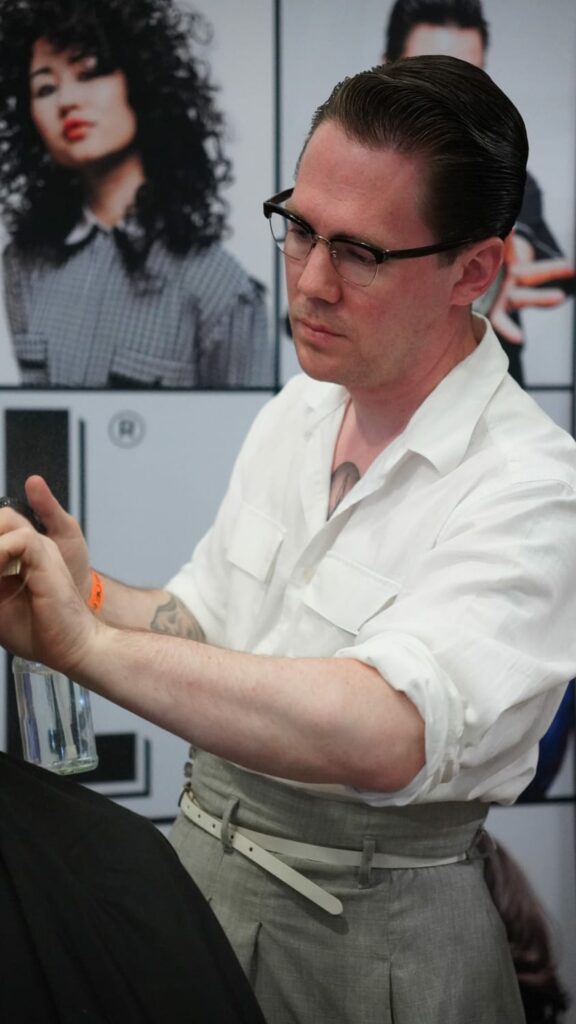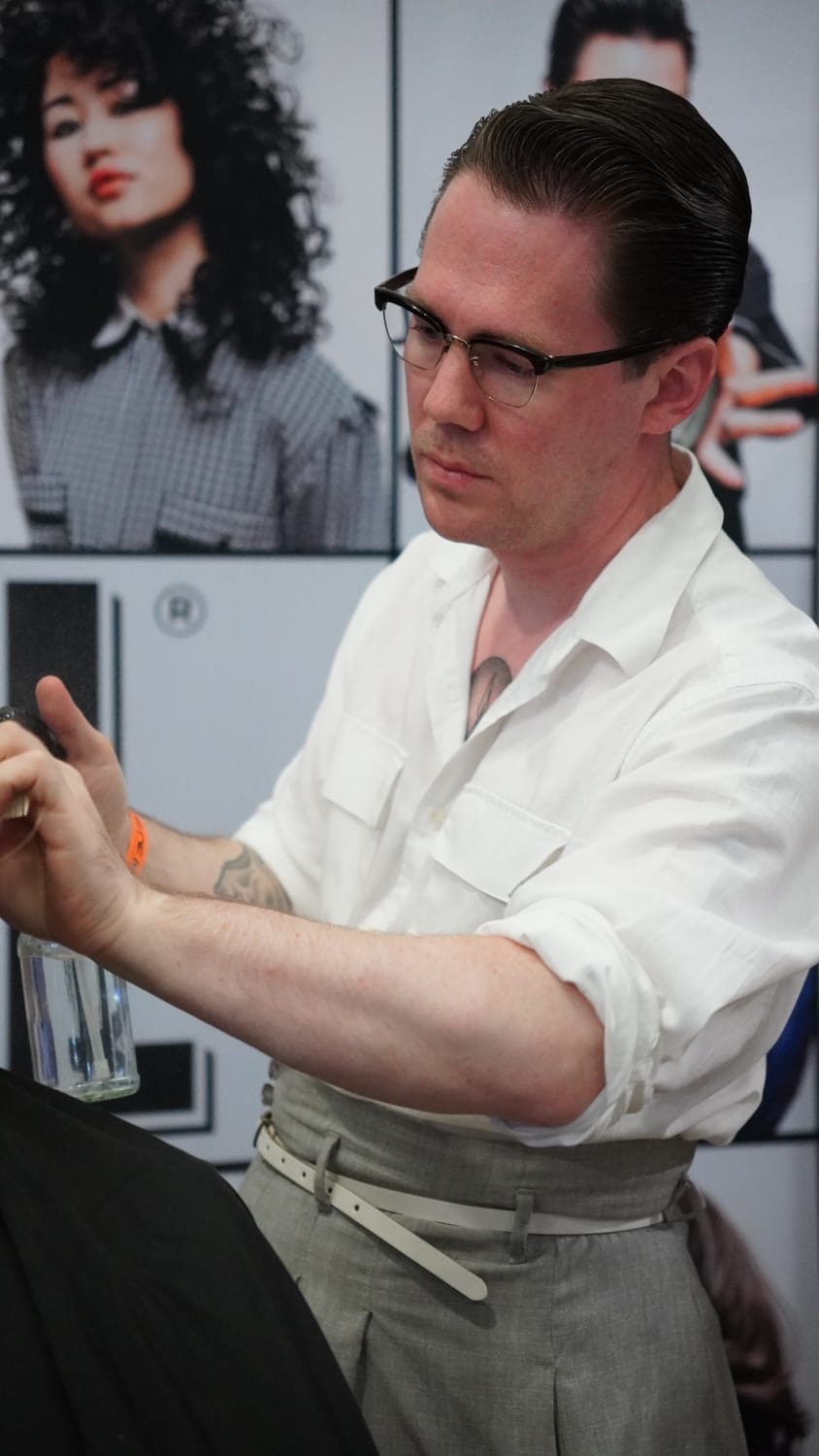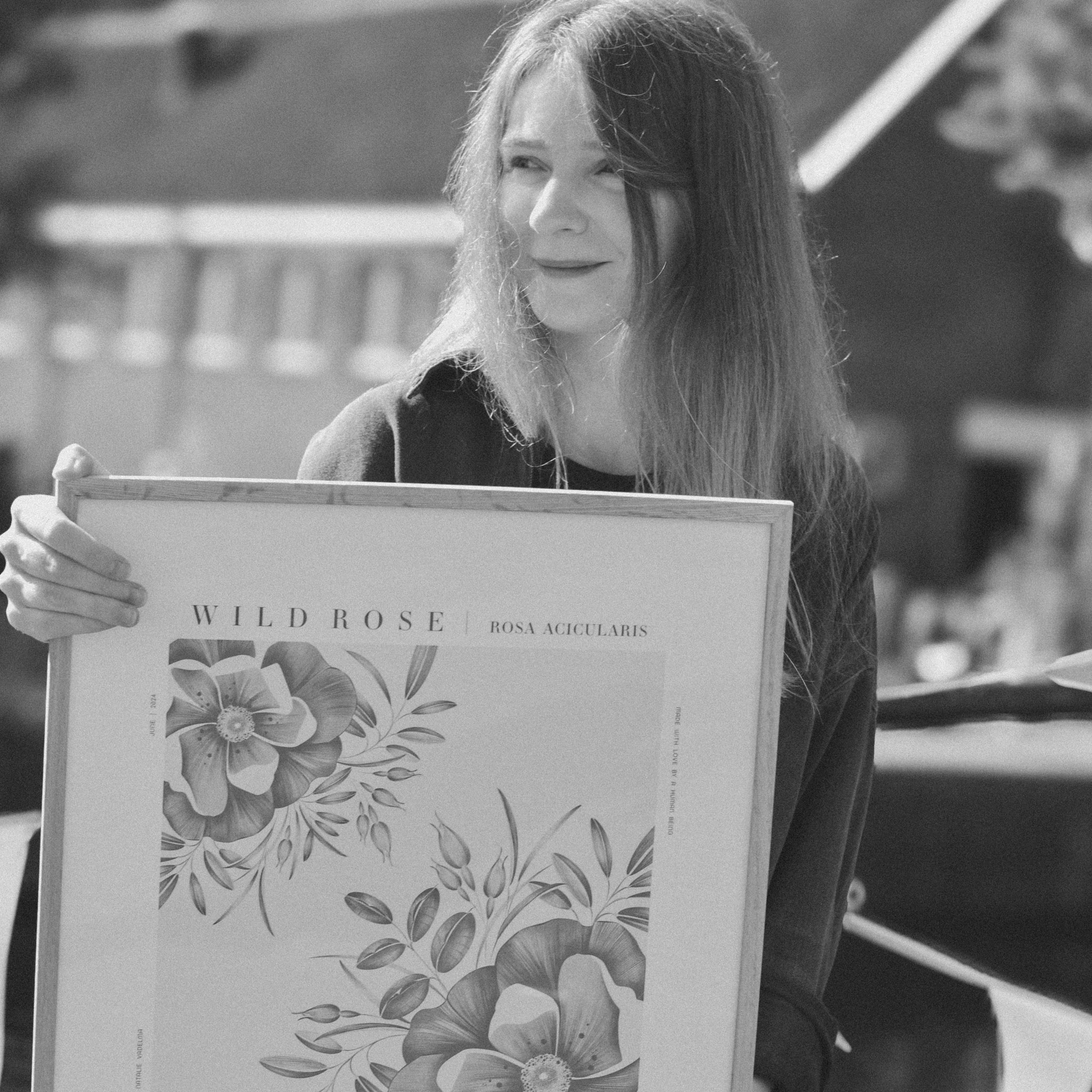At Gallery, we love sharing the stories of passionate entrepreneurs in our community. This time, we sat down with Duncan, a former graphic designer turned barber, to discuss his journey, the challenges of starting his own business, and the philosophy behind his craft.
How did you transition from graphic design to barbering?
Duncan: I wasn’t actually drawn to barbering at first. I was a graphic designer for about a year and a half, but then the company I worked for nearly went bankrupt. I found myself unemployed and frustrated. One day, I was venting to my barber, and he asked me, ‘Have you ever thought about becoming a barber?’ It was a bit of an awkward moment, but it planted the seed. I talked it over with my mum, and she made a good point—it’s a skill that could always make me money, no matter what. So, I decided to give it a try.
At first, I wasn’t sure. I even asked my barber, ‘Does this guarantee me a five-day-a-week job?’ He laughed and told me it depended on my grades and skill. That uncertainty made me hesitant, but once I gave it a shot, I fell in love with the craft.
When did you realize barbering was more than just a skill for you?
Duncan: The moment I finished my first real haircut on a client. The satisfaction was instant—not just for the customer, but for me too. It reminded me of graphic design, in a way. The aesthetics, balance, and precision were all there, but now I was working with people. That’s when it clicked, and I knew this was something I wanted to do long-term.
I also love the social aspect of it. You can really make someone’s day with a good haircut. We always joke that you can destroy someone’s self-confidence for a year with a bad haircut, so the responsibility is real! But when you get it right, you see that sparkle in their eyes—it’s incredibly rewarding.
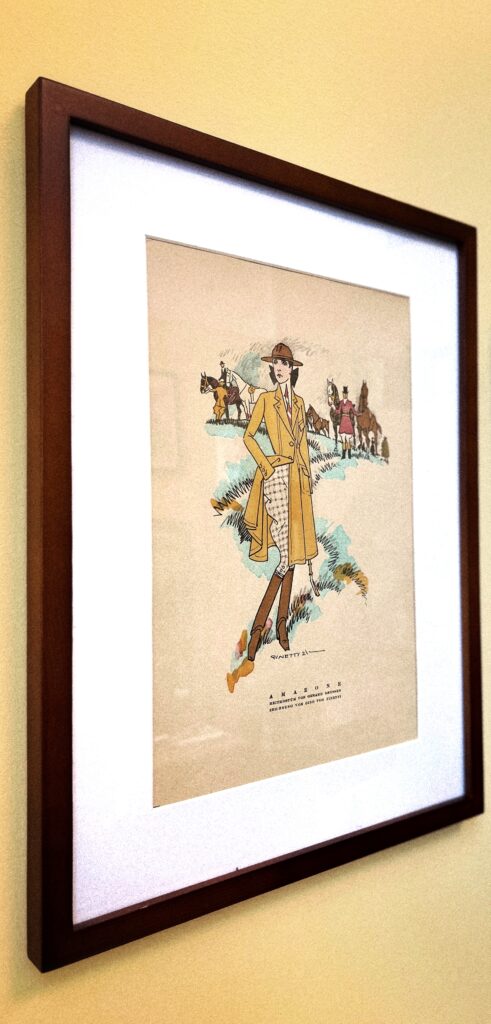
What was the scariest part of starting your own business?
Duncan: Giving up a stable paycheck. It’s a strange mix of excitement and fear. On one hand, you’re thrilled to be doing something for yourself. On the other, you’re constantly worried—’Will this work? Can I make enough money?’ It’s not like facing a tiger, but it’s this lingering fear that keeps you up at night. At the same time, I kept telling myself, ‘It’s going to work. It has to.’
It’s a weird fear too—it’s not immediate danger, but it lingers in your head. It messes with your sleep, it makes you overthink, but at the same time, the excitement keeps you going.
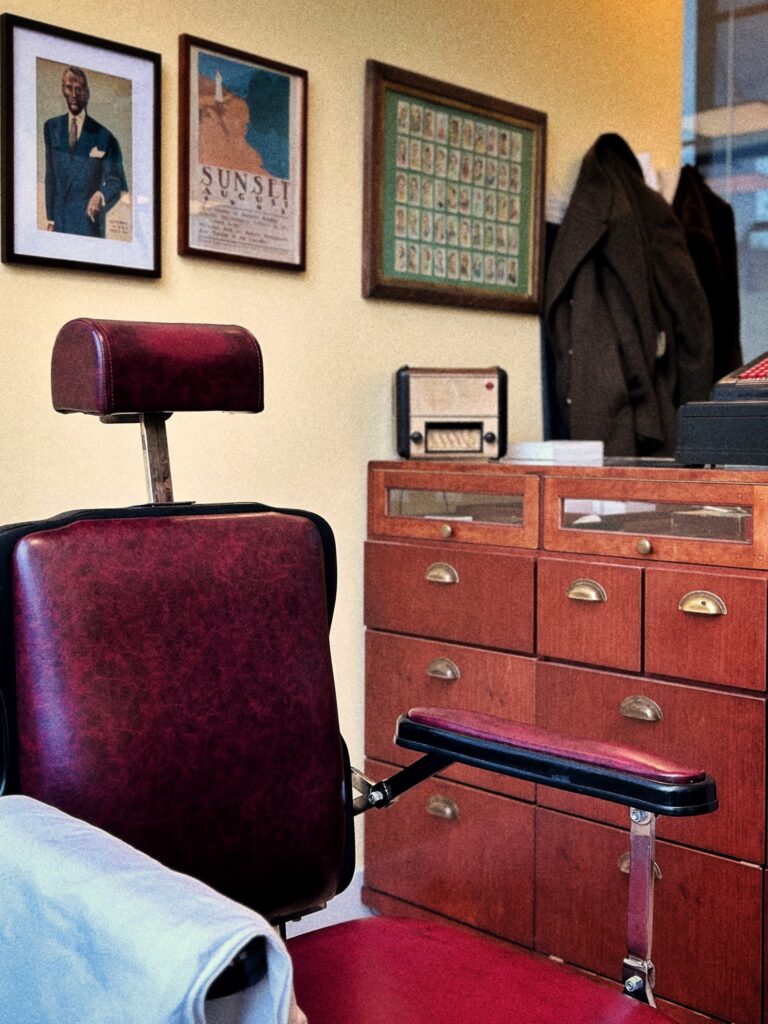
Why did you choose Gallery?
Duncan: I actually almost opened my shop inside a train museum in Utrecht. It would’ve been a dream location, but after months of negotiations, it fell through due to external business decisions. That was tough. But then I revisited Gallery and saw the potential—great facilities, central location, flexible agreements, and a supportive community. It felt like the right place to start.
What I really like is that there’s an actual connection with the management. You meet the people behind the space, and they genuinely care. That doesn’t happen often. The flexibility and community feel at Gallery really made a difference for me.
Even little things, like how Urte, the community manager, makes her rounds and checks in on people, create a sense of belonging. I also appreciate how the team listens to feedback and makes improvements. It feels like a place where I can truly grow my business.
How do you keep your brand and space unique?
Duncan: I chose to use my full name for branding rather than something barber-specific. That way, if I ever pivot to another industry, I won’t have to rebrand. And when it comes to my studio, I always tell people—make it your own. Even if you’re only in a space for a few years, invest in making it personal. It’s the best form of advertising.
I love vintage aesthetics, so my space reflects that. I’ve got old furniture, framed pictures, a bit of color—it tells my story. When clients walk in, they get a sense of who I am. That’s important.
I also believe in keeping things warm and inviting. I want people to feel comfortable, like they’re stepping into a well-thought-out space with character. My studio isn’t just about haircuts—it’s about creating an experience.
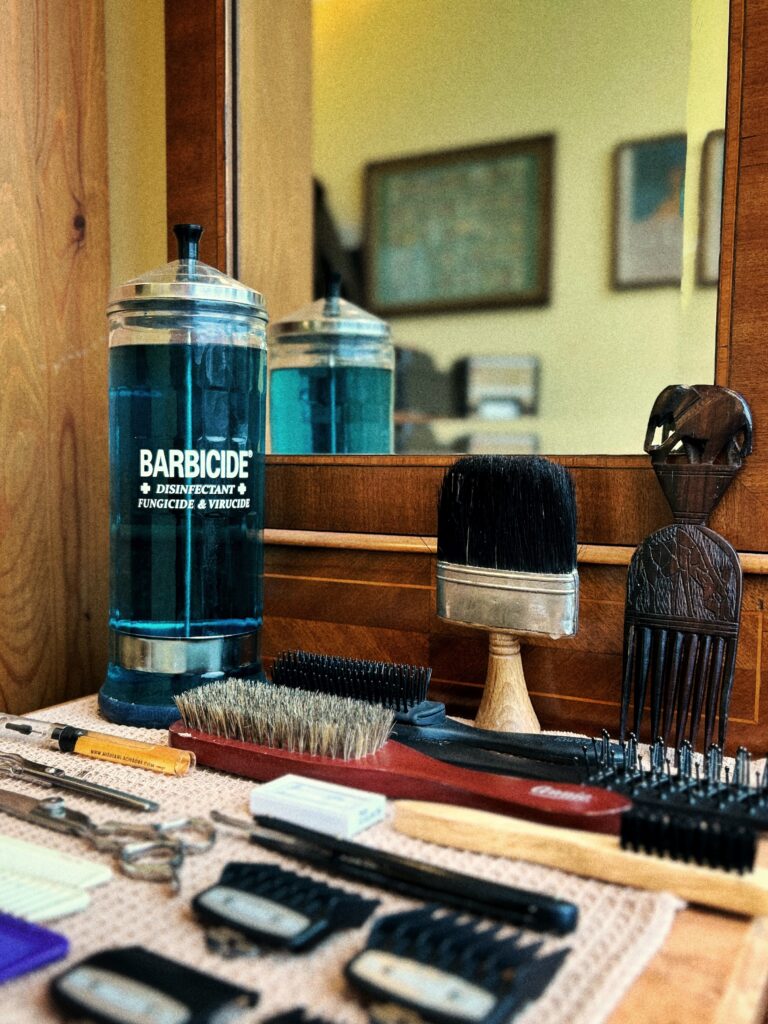
Where do you find inspiration for your craft?
Duncan: Not from modern barbering videos! I look at vintage photography, old Hollywood films, mid-century fashion. That’s where I find my inspiration. I also like learning directly from people rather than watching staged content. It feels more real, and you pick up skills you wouldn’t otherwise.
Barbering videos nowadays are more about showboating than education. I prefer hairdressing videos—they focus more on technique. I also look at art and fashion for inspiration. It’s all about finding balance, proportions, and style.
What has been your most rewarding career moment?
Duncan: Being invited to teach at a barber academy. I never aimed for that—I thought those guys were out of my league. But one day, one of the owners walked into the barbershop where I rented a chair and offered me a job at their academy. It was a huge confidence boost, and it showed me that my work was getting noticed in ways I hadn’t expected.
I wasn’t even considering it, which made it even more special. It proved to me that my work was valuable, and that’s a great feeling.
What’s your advice for someone who wants to start their own business?
Duncan: If a door opens, step through it. It sounds simple, but it’s true. My entire career has been about opportunities showing up when I least expected them, and I just went for it. Taking risks has led me here, and I have no regrets.
Another thing—don’t burn bridges. The industry is smaller than you think, and the connections you make will follow you. Also, work for someone first, learn how things operate, and pay attention to how businesses are run. It’ll save you a lot of headaches later on.
Finally, don’t be afraid to put your personality into your space. Your work environment should reflect who you are. People appreciate authenticity, and it makes your brand stand out.

